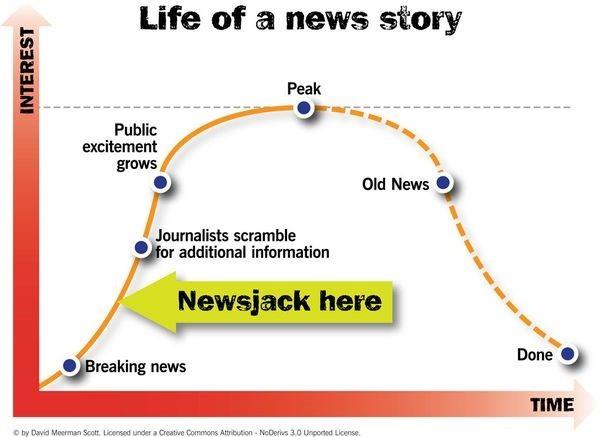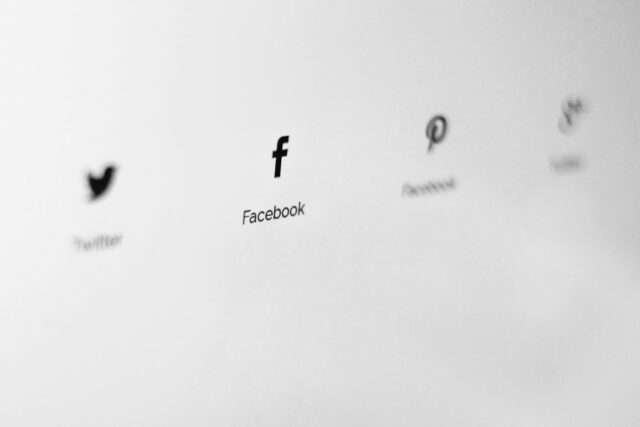For PR professionals, newsjacking is the art of putting businesses and thought leaders at the heart of breaking and trending stories by adding relevant thoughts and opinions with the goal of securing pieces of press coverage, backlinks, and generating engagement.
For that reason, it’s no surprise that it’s also an incredibly competitive activity – one in which time is of the essence and is the key to success.
So, how do you run an efficient newsjacking strategy that drives consistent results for your brand?
First off, what is newsjacking?
Newsjacking is a widely known always-on content marketing strategy that involves taking advantage of or capitalising on trending news stories to get your brand’s voice heard.
It’s the process of jumping on fresh news or journalist enquiries by offering your business’ or a thought leader’s opinion and advice (serious or tongue in cheek) to generate quick results as part of any brand awareness or, now more commonly, Digital PR strategy.
The most important three factors that underpin any successful newsjacking strategy are how timely, relevant and compelling your content is. If you’re interested in history, David Meerman Scott created the concept of newsjacking in 2013. It grew in prominence, so much so that it was even shortlisted by the Oxford Dictionaries as the Word of the Year in 2017 (you never know when you’ll need that little nugget for a pub quiz).
He produced a useful visual explaining the lifecycle of when newsjacking works:

What mediums is newsjacking used on?
There are several different forms that newsjacking may come in.
PR
This is arguably the most popular, with newsjacking forming a natural extension of any PR strategy that secures press coverage fast by attributing comments and data to a story or a journalist’s enquiry.
SEO
While newsjacking has been around for a while now, thanks to Digital PR it has only grown in popularity for its ability to build highly authoritative and relevant links fast and to get your brand ranking on Google for a particular search term.
Depending on the authority of the website that published the story you have successfully newsjacked, it could lead to further syndicated coverage and links without any further effort.
Social Media
Out of all the digital tools at our fingertips, few offer as quick a response to trends and breaking stories as social media.
And as platforms like Twitter have risen to become the leading platforms for breaking news, they’ve also become the best location to react to them, more often than not with a tongue-in-cheek response
Top tips for running a successful newsjacking strategy
There are many key components to running an effective newsjacking strategy. Below are some of the factors you need to consider:
1. Reacting at speed
In order to give yourself the best chance of landing coverage, links, or engagement, you have to be able to respond as quickly as possible.
The quicker you are at passing commentary on a breaking story or by responding to a journalist’s enquiry, the better chance you’ve got of making the cut. Late comments that come through will only make the cut if they’re much better than what’s already been submitted.
The rule of thumb is: if you can’t respond that day, the opportunity has probably been missed. When it comes to breaking and trending stories, journalists are usually looking for a response ASAP.
Our rule of thumb is that breaking news commentary should be supplied in as little as 30 minutes.
The best way of achieving this with your brand and clients is to action newsjacking requests via instant messaging tools, like Slack or WhatsApp. That way, enquiries can be sent directly to the necessary thought leaders to provide their response as quickly as possible.
2. Have a thriving and up-to-date blog
Perhaps one tip you weren’t expecting but actually, if you’ve got a blog packed full of useful information that’s been written by experts, you’re in a pretty strong position.
Most blogs nowadays are built around SEO strategies, with topics and articles often written in line with what queries and keywords people are searching for on Google. So, should a journalist require expert commentary on an article similar to one of yours, you’ve got the content to hand to repurpose and respond quicker than anyone else.
3. Plan ahead
Newsjacking revolves around the news agenda and while there are certain stories you simply won’t be able to prepare for, there are some recurring themes that you can.
Each year in the UK, we have the same national holidays that journalists are often asking for commentary about. As an example, on Valentine’s Day, you can confidently predict that journalists will be asking about the best locations to take a date or what trending gifts to get your partner. Similarly, at the end of the year, journalists are always preparing January articles about overcoming the post-Christmas blues or what the upcoming trends are in a particular industry.
Events are similar, too. For example – pandemic aside – the usual high profile sport, music, and political events are held each year.
When we plan ahead, we can begin to plan what content is required. And with content already created and ready to go, you’re giving yourself the best chance of standing out.
What topics are best for newsjacking?
The first thing to say is that newsjacking is better for some industries and topics than others.
For example, B2B brands will find they have far fewer opportunities for newsjacking than B2C brands. A business that is renowned for selling machinery won’t have as many opportunities as a company that sells kitchen appliances.
So while a legal firm would never be able to comment on the winner of The Masked Singer, it doesn’t mean there will never be a relevant chance to respond to a breaking story or trend.
Below is a list of some of the topics that generate the highest number of newsjacking requests from journalists:
- Breaking news
- The royal family
- Politics
- New year trends
- Climate change
- Fashion
- Home and garden
- Product reviews and prizes
- DIY
- Protests
- Travel
- HR
- Health and wellbeing
- Relationships, dating, and sex
- Personal finance and saving tips
TIP: A free way to check the latest journalist requests can be found on Twitter by using the hashtag #journorequest. By spending time scanning through this each day, you’re giving yourself the best chance of discovering new newsjacking opportunities.
The seven benefits of newsjacking
So, given everything that’s been covered in this blog, you’re going to want to know what you can get out of newsjacking, right?
Here are just a few of the benefits that implementing newsjacking into your PR strategy can have:
- Backlinks – more so with journalist requests, publications will offer the sweetener of a link to any contributors in the article they need information or commentary for.
- Brand mentions – following on from the above, sometimes a link won’t be forthcoming. But don’t underestimate the importance of a brand mention in a relevant and authoritative publication.
- Drive website traffic – with juicy links comes website traffic. Newsjacking plays a big role in any SEO strategy and if those external links help drive your brand up to number one in the searches, you’re claiming 34% of the Organic traffic in comparison to position number two, which is likely to be a competitor.
- Syndicated coverage – leading publications often have their articles used – word for word – by other smaller publications. The result is that your brand and the links to it follow as well.
- Brand trust – coverage builds brand trust. If someone is searching for a service and your competitor pops up with no coverage next to your brand which does, you can imagine which is going to get the click.
- Quick wins – as we mentioned before, newsjacking requires speed to be effective. But when it’s done well, you’re driving a constant stream of links and brand mentions.
- Cost-effective – unlike big campaigns which require a lot of time and effort (sometimes months before it goes live) newsjacking is an effective day-to-day, moment-to-moment, activity which can build authoritative links just as well as any PR strategy can.
Six newsjacking mistakes to avoid
There are a few questions you need to be asking yourself before you kick off a newsjacking campaign:
- Is there a connection between the news story and your own brand? Does the angle you’re taking make sense?
- Is the message congruent with your brand personality?
- Is it clear who you are trying to reach? Who is the audience for this story?
- Have you been quick enough off the mark? Is the story still breaking news?
- Is what you are going to say actually interesting? Tone-deaf newsjacking will damage your reputation.
- Is the story sensitive, tragic or in some other way inappropriate? Don’t be reckless.
A newsjacking template
We’ve created a very simple template that you can download to create your own newsjacking plan – fill it in to ensure you don’t miss a thing.
We’ve also included some upcoming dates you might find useful, along with suggestions for things to look out for. If you want to tie it into your social media marketing too, why not check out our social media content calendar?
Get in touch with our experts if you’d like a hand with your PR strategy.









